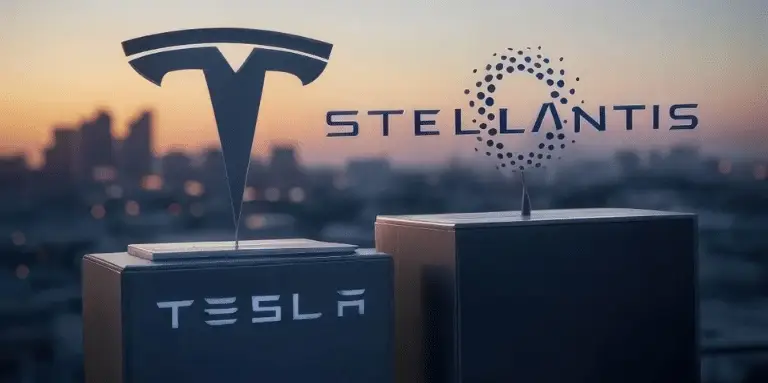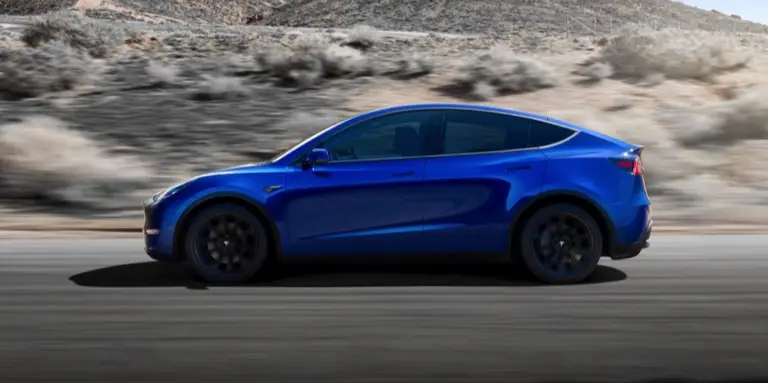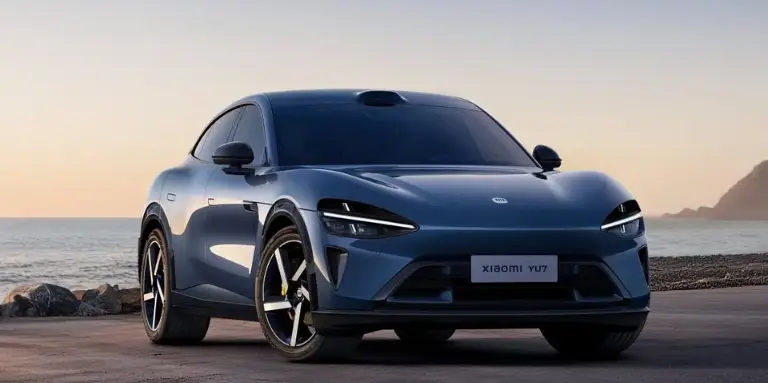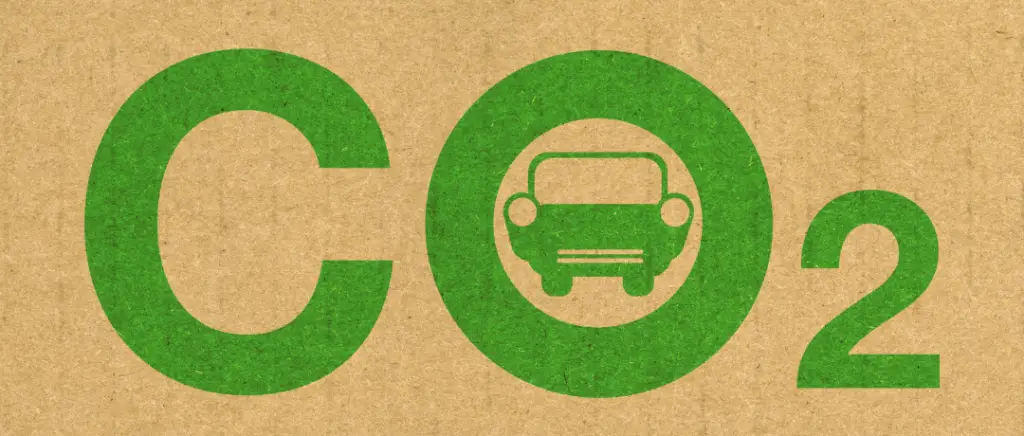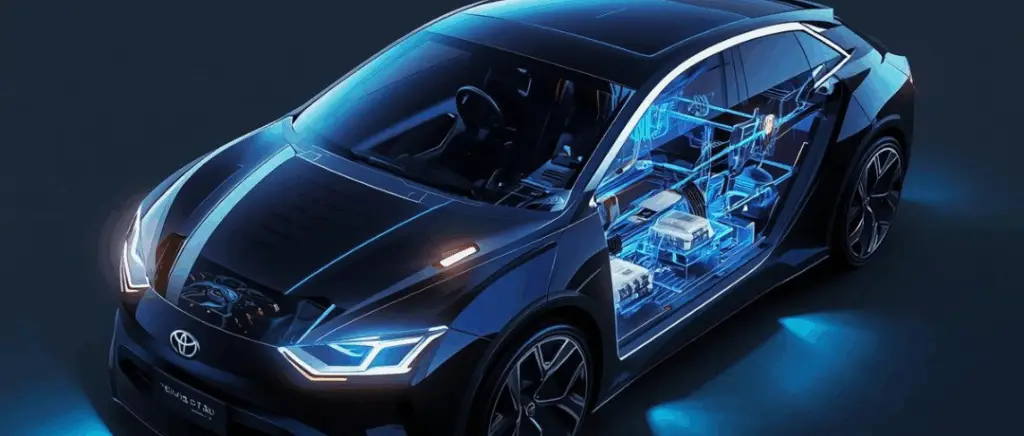Our experts will advise you according to your needs. Beev offers Tesla 100% electric vehicles at the best prices, as well as recharging solutions.
Stellantis and Tesla: a strategic partnership to meet CO2 targets
Why is Stellantis teaming up with Tesla to avoid penalties for CO2 emissions?
Stellantis partners with Electric Tesla to comply with the European Union's CO2 emissions standards, which become more stringent from 2025. This collaboration enables Stellantis to benefit from the excess emissions credits of Tesla, a manufacturer exclusively dedicated to electric vehicles. By combining their results, Stellantis can reduce its average emissions, thereby avoiding potential fines that could amount to several billion euros.
The partnership also gives Stellantis time to shift production to electric vehicles, while preserving its financial position in the face of sanctions.
What impact will this alliance have on the future of the car industry?
The alliance between Stellantis and Tesla could influence the dynamics of the automotive market by delaying the transition to greener vehicles for some manufacturers. By allowing traditional manufacturers to buy emissions credits, this strategy could reduce the pressure to invest quickly in clean technologies.
It could also encourage regulators to review their policies, by tightening requirements or adjusting emission pooling rules to encourage more rapid adoption of less polluting vehicles. Finally, this collaboration highlights a growing trend towards partnerships between competitors in a rapidly changing sector.
See also our article :
CO2 targets: crucial issues for Stellantis and the automotive sector
What are the consequences for Stellantis if the emissions targets are not met?
If Stellantis fails to meet the CO2 emission targets set by the European Union for 2025, it could face serious financial consequences:
- Substantial fines of €95 per gram of excess CO2 per vehicle sold. For a manufacturer the size of Stellantis, these penalties could amount to several billion euros.
- To illustrate the scale of these penalties, let's take the example of the entry-level version of the Peugeot 208. With CO2 emissions of 117 g/km, it would exceed the threshold of 22 g/km, representing a fine of €2,090 per vehicle sold.
- All European carmakers could face fines totalling between 10 and 15 billion euros.
To avoid these sanctions, Stellantis is considering drastic measures, including a significant reduction in its production of combustion-powered vehicles from November 2024.
This decision, although potentially harmful in the short term for sales and employment, is considered necessary to preserve the Group's profitability in the face of the threat of these colossal fines.
How do European regulations influence manufacturers' decisions?
European regulations have a considerable influence on carmakers' decisions in a number of ways:
Firstly, they impose strict targets for reducing CO2 emissions, forcing manufacturers to electrify their ranges on a massive scale. The "Fit for 55" plan calls for a 55% reduction in CO2 emissions from new cars by 2030 compared with 2021 levels, with the ultimate goal of achieving zero emissions by 2035. This regulatory pressure is forcing manufacturers to invest massively in the development of electric vehicles and to review their production strategies.
Secondly, the threat of heavy fines for non-compliance with the standards is forcing manufacturers to take drastic decisions. They risk penalties of €95 per gram of excess CO2 per vehicle sold. To avoid these potentially colossal penalties, some manufacturers are planning to significantly reduce their production of combustion-powered vehicles from the end of 2024, despite the potential impact on sales and employment in the short term.
Finally, faced with what the industry describes as a "tsunami of standards", manufacturers are calling for the pace of regulation to be slowed down. The European Automobile Manufacturers' Association (ACEA) has called on the European institutions to adopt a "more reasonable regulatory tempo" and to develop a coherent long-term industrial strategy. This intense regulatory pressure is mobilising a significant proportion of manufacturers' resources, with up to a quarter of engineers working to meet these standards, according to some manufacturers.
These regulations are therefore forcing manufacturers to speed up their transition to electric vehicles, rethink their production and investment strategies, and look for alliances or innovative solutions to comply with the standards while maintaining their competitiveness.
Tesla and Stellantis: towards an accelerated transition to electric vehicles
How is Tesla contributing to the rapid adoption of electric vehicles at Stellantis?
Tesla is making a significant contribution to the rapid adoption of electric vehicles at Stellantis in a number of ways:
Firstly, Tesla has allowed Stellantis to adopt its NACS (North American Charging Standard) charging connector for its electric vehicles in North America. Starting in 2025, Stellantis will equip some of its 2026 model year electric vehicles with this connector. This decision opens up new charging opportunities for Stellantis customers, potentially giving them access to the vast network of Tesla Superchargers.
Secondly, Tesla plays a crucial role in Stellantis' emissions compliance strategy. Faced with tightening European regulations on CO2 emissions, Stellantis plans to buy emissions credits from Tesla. This approach will allow Stellantis to gain time to develop its own range of electric vehicles while avoiding heavy fines linked to non-compliance with anti-pollution standards.
Finally, the expansion and opening up of the Tesla Supercharger network to other brands of electric vehicles, including potentially those of Stellantis, could act as a major catalyst in the mass adoption of electric mobility. By offering a reliable, accessible and widespread recharging solution, Tesla is helping to remove one of the main disincentives to the purchase of electric vehicles, which could accelerate Stellantis' transition to a more electrified range.
See also our article :
How could this collaboration reshape the range of electric cars on the market?
The collaboration between Stellantis and Tesla could reshape the supply of electric cars on the market in a number of ways:
Firstly, this alliance could accelerate the adoption of Tesla's charging standards by Stellantis. Starting in 2025, Stellantis plans to equip some of its 2026 model year electric vehicles with Tesla's North American Charging Standard (NACS) connector in North America. This could improve the interoperability of charging infrastructures and facilitate the adoption of electric vehicles by consumers.
Secondly, this collaboration could buy Stellantis time to develop its own range of electric vehicles, while avoiding the heavy fines associated with non-compliance with emissions standards. This financial breathing space could be reinvested in research and development, potentially accelerating innovation and improvement in electric technologies at Stellantis.
Finally, this alliance could influence the pricing strategies of electric vehicles. Stellantis, through its partnership with Chinese battery manufacturer CATL, expects to reduce the production costs of LFP batteries, which could translate into more competitive prices for its electric vehicles. This price reduction, combined with potential access to the Tesla Supercharger network, could make Stellantis' electric vehicles more attractive to consumers, stimulating competition in the market and potentially accelerating the mass adoption of electric mobility.
Conclusion
In conclusion, the strategic collaboration between Stellantis and Tesla represents a calculated response to the regulatory challenges associated with CO2 emissions. By leveraging Tesla's emissions credits and charging infrastructure, Stellantis is securing its compliance while strengthening its transition to electrification.
This alliance reflects our determination to innovate and adapt in a fast-changing sector, while laying the foundations for sustainable, competitive mobility.
